Guaranteed Delivery
by Mother’s Day
on orders placed through May 2
Guaranteed Delivery by Mother’s Day
on orders placed through May 2
on orders placed through May 2
on orders placed through May 2
SAVE 15% OFF your order
(Use code LOVE)
FREE SHIPPING when you spend $100 (Continental US Only)
FREE 9″ Beech Bowl when you spend $150 (Use code SPRING)
SAVE 15% on all orders (Use code LOVE)
FREE SHIPPING when you spend $100 (Continental US Only)
FREE 9″ Beech Bowl when you spend $150 (Use code SPRING)
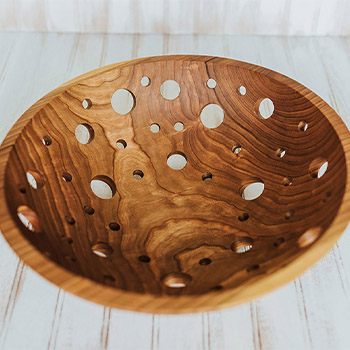
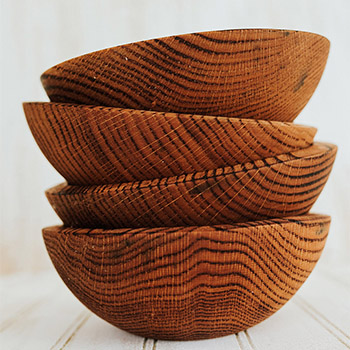
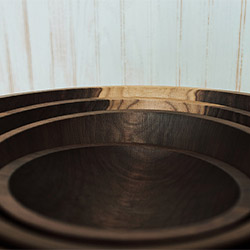
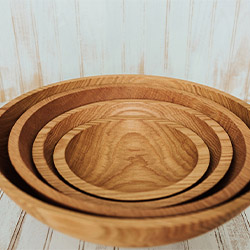
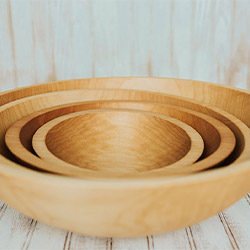
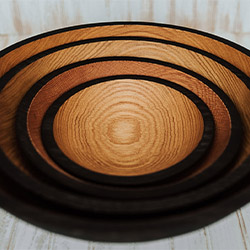
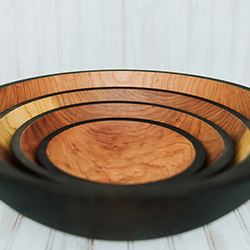
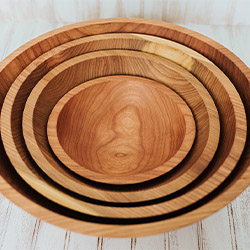
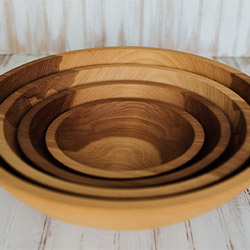


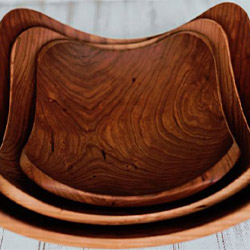
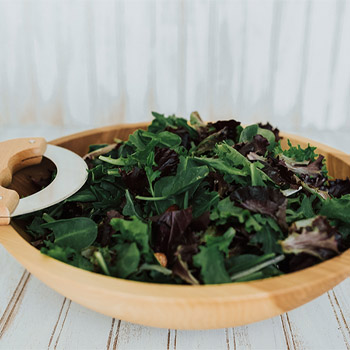

Share
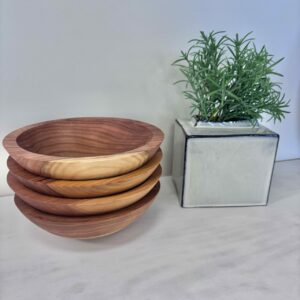
You know, when it comes to preserving and enhancing the natural beauty of your wooden furniture or flooring, there’s nothing quite like the art of hand-rubbed beeswax polish. With its gentle touch and exquisite results, this timeless technique has been cherished by wood lovers for generations.
But with so many methods out there, how do you choose the best one for your needs? Well, my friend, fear not. We’re about to reveal the ten most effective hand-rubbed beeswax polish methods for wood, which will leave you with a finish that’s nothing short of extraordinary.
So, what are you waiting for? It’s time to uncover the secrets of achieving that perfect, lustrous shine.
Note: Remember to write the bullet points in an unordered list format.
To achieve a beautiful and long-lasting finish on your wood, consider using the time-tested method of traditional hand-rubbed beeswax polish. This method has been used for centuries and continues to be a popular choice for those who desire a sense of belonging to a rich heritage of craftsmanship. Hand-rubbed beeswax polish not only enhances the natural beauty of the wood but also provides protection against wear and tear.
When using traditional hand-rubbed beeswax polish, start by preparing the surface of the wood. Ensure that it’s clean and free from dust and debris. Apply a thin layer of beeswax polish using a soft cloth or brush, following the direction of the wood grain. Take your time and work in small sections, allowing the polish to penetrate the wood.
Once the polish is applied, use a clean cloth to rub the surface in circular motions gently. This helps to distribute the polish evenly and brings out the wood’s natural luster. As you rub, you’ll notice the warmth of the wood and the rich aroma of the beeswax. This experience adds to the sense of belonging as you become part of a long line of craftsmen who’ve cherished the art of hand-rubbing wood.
For the best results, repeat this process several times, allowing each layer of polish to dry before applying the next. This builds up a protective barrier on the wood, ensuring that it remains beautiful and well-preserved for years to come.
Regular maintenance with beeswax polish will help maintain the wood’s appearance and protect it from everyday wear and tear.
Now let’s talk about the benefits of using beeswax and olive oil polish for your wood. You’ll be amazed at how this natural combination can enhance the beauty and durability of your furniture.
Plus, we’ll show you a simple and effective method to make your own beeswax polish at home.
Using a combination of beeswax and olive oil as a wood polish offers numerous benefits. Not only does it provide a natural and eco-friendly way to enhance the beauty of your wooden furniture, but it also helps to protect and preserve the wood for years to come. The beeswax acts as a sealant, creating a protective barrier against moisture, dust, and other environmental factors that can damage the wood. Meanwhile, the olive oil nourishes the wood, keeping it hydrated and preventing it from drying out or cracking. Together, these two ingredients create a powerful and effective polish that not only restores the natural luster of the wood but also adds a warm and inviting glow to your living space.
| Benefits of Beeswax and Olive Oil Polish |
|---|
| Provides a natural and eco-friendly solution |
| Protects wood from moisture and environmental damage |
| Nourishes and hydrates wood |
| Restores natural luster |
| Adds warm and inviting glow to your space |
Enhancing the benefits of beeswax and olive oil as a wood polish, let’s explore how to create your own beeswax polish.
Making your own beeswax polish is a rewarding and simple process that will leave your wood furniture looking beautiful and well-cared for. To start, you’ll need beeswax, olive oil, and a small saucepan.
Begin by melting the beeswax in the saucepan over low heat until it becomes a liquid.
Next, add the olive oil to the melted beeswax and stir until well combined.
Allow the mixture to cool slightly before pouring it into a container for storage.
Once cooled and solidified, your homemade beeswax polish is ready to use.
Simply apply a small amount to a clean cloth and gently rub it onto your wood surfaces, buffing it in circular motions.
Your wood will thank you for the love and attention it receives with this homemade polish.
To enhance the natural fragrance and add a refreshing touch to your wood surfaces, consider infusing beeswax with citrus. Citrus-infused beeswax polish is a delightful way to bring a sense of belonging and warmth to your home. The process is simple, and the results are truly amazing.
To make citrus-infused beeswax polish, start by gathering the necessary ingredients: beeswax pellets, a carrier oil (such as jojoba oil or olive oil), and citrus peels (such as orange, lemon, or grapefruit). The citrus peels will provide a burst of fresh scent that will uplift your space.
Begin by melting the beeswax pellets in a double boiler. Once melted, add the carrier oil and stir until well combined. Next, add the citrus peels to the mixture and allow them to steep for a few hours. This will infuse the beeswax with the citrus fragrance.
After the mixture has steeped, strain out the citrus peels and transfer the infused beeswax polish into a clean container. Allow it to cool and solidify before using it on your wood surfaces.
To apply the citrus-infused beeswax polish, simply take a soft cloth or sponge and scoop out a small amount. Rub the polish onto the wood surface in a circular motion, allowing the natural oils to penetrate and nourish the wood. The citrus scent will linger, leaving your space smelling fresh and inviting.
If you’re looking to explore another option for wood polish, consider using a blend of beeswax and carnauba wax. This combination offers a unique set of benefits that can enhance the beauty and durability of your wood surfaces.
Here are some reasons why the beeswax and carnauba wax blend is a fantastic choice for your polishing needs:
For a nourishing and protective wood polish, consider using a blend of beeswax and walnut oil. This combination is perfect for those who desire a sense of belonging in their home. The beeswax and walnut oil polish not only enhances the natural beauty of wood but also provides long-lasting protection against moisture and everyday wear and tear.
To create this polish, start by melting beeswax in a double boiler or a heatproof container placed in a pot of simmering water. Once the beeswax has melted, add an equal amount of walnut oil and stir until well combined. The warm, earthy scent of walnut oil adds a comforting touch to your wooden furniture, creating a cozy atmosphere that invites you to relax and feel at home.
When applying the polish, use a soft cloth or a natural bristle brush to work the mixture into the wood, following the grain. The beeswax and walnut oil will penetrate the surface, nourishing the wood from within and leaving a lustrous, satin finish. Your furniture won’t only look rejuvenated but also be protected against drying out and cracking.
Regular application of this beeswax and walnut oil polish will help maintain the beauty and longevity of your wooden pieces. It’s recommended to reapply the polish every few months or as needed, depending on the level of use and exposure to environmental factors.
The combination of beeswax and coconut oil creates an effective and natural wood polish that nourishes and protects your wooden surfaces. This polishing method not only brings out the natural beauty of the wood but also helps to preserve it for years to come.
Here are three reasons why the beeswax and coconut oil polish is a great choice for your wooden furniture and surfaces:
To continue exploring natural wood polish options, let’s now shift our focus to the benefits of using beeswax in combination with almond oil. Beeswax and almond oil polish is a popular choice among wood enthusiasts due to its nourishing and protective properties. The beeswax provides a natural barrier that helps to seal the wood, while the almond oil penetrates deep into the grain, moisturizing and enhancing its natural beauty. This combination leaves the wood with a rich, warm glow that is both visually appealing and inviting to the touch.
Here is a table that outlines the advantages of using beeswax and almond oil polish:
| Advantages of Beeswax and Almond Oil Polish | ||
|---|---|---|
| 1. Nourishes and moisturizes wood | 2. Enhances natural beauty | 3. Provides a protective barrier |
| 4. Leaves a rich, warm glow | 5. Inviting to the touch |
Using beeswax and almond oil polish not only enhances the appearance of your wood furniture or floors but also helps to extend their lifespan. The nourishing properties of almond oil help to prevent the wood from drying out and cracking, while the protective barrier created by the beeswax helps to shield it from everyday wear and tear. This combination of benefits ensures that your wood will continue to look and feel its best for years to come.
Consider trying out the benefits of using beeswax in combination with jojoba oil for a natural and effective wood polish. This powerful duo can bring out the beauty of your wooden furniture and give it a long-lasting shine. Here are three reasons why beeswax and jojoba oil polish is the perfect choice for those who desire a sense of belonging:
For a natural and eco-friendly alternative to commercial wood polishes, try using a blend of beeswax and hemp oil. This combination not only enhances the beauty of your wooden furniture but also provides nourishment and protection. Beeswax acts as a sealant, creating a protective barrier against moisture, while hemp oil penetrates deep into the wood, providing hydration and preventing cracking. Together, they create a powerful and sustainable polish that is safe for both you and the environment.
Here is a comparison of the benefits of using beeswax and hemp oil polish:
| Beeswax Polish | Hemp Oil Polish | Beeswax and Hemp Oil Polish |
|---|---|---|
| Provides a glossy finish | Enhances the natural grain of the wood | Gives a beautiful, natural sheen |
| Repels water and spills | Moisturizes and prevents drying | Protects against moisture and cracking |
| Creates a durable protective layer | Absorbs into the wood for long-lasting results | Provides long-lasting protection |
| Easy to apply and maintain | Requires minimal upkeep | Simple and sustainable maintenance |
Using beeswax and hemp oil polish not only helps to preserve and beautify your wooden furniture but also promotes a sense of belonging to a community that cares about the environment. By choosing natural and sustainable alternatives, you are making a positive impact on the world around you.
You may be wondering about the benefits of combining beeswax and essential oils for your wood polish. Well, let’s explore the advantages of this unique combination.
Not only does it provide a natural and protective finish for your wood, but the essential oils also add a delightful fragrance to your furniture.
Plus, we’ll discuss some application techniques to ensure the best results.
Using beeswax in your wood polish offers a natural and effective way to nourish and protect your wooden furniture and surfaces. Beeswax has been used for centuries due to its numerous benefits. Here are some reasons why beeswax is a great choice for your wood polish:
To create a fragrant and nourishing beeswax and essential oil polish, follow these simple steps.
First, gather your materials: beeswax, a carrier oil (such as olive or coconut oil), and your choice of essential oils. Essential oils not only add a delightful aroma but also provide additional benefits to your wood surfaces.
For a calming and grounding polish, combine lavender and cedarwood essential oils. If you want an uplifting and energizing scent, try a combination of lemon and peppermint oils. For a cozy and comforting atmosphere, mix cinnamon and vanilla oils.
Once you have chosen your essential oil blend, melt the beeswax and carrier oil together, then add your essential oils. Stir well and let it cool.
Now, you have a beautiful, fragrant polish to nourish and protect your wood surfaces. Enjoy the sense of belonging that comes with creating a warm and inviting home.
For a smooth and even application of the beeswax and essential oil polish, start by preparing your wood surface. Follow these application techniques to ensure a professional finish:
These ten hand-rubbed beeswax polish methods offer a variety of options for preserving and enhancing the natural beauty of wood. From traditional blends to unique infusions, each method brings its own unique benefits and scent.
So why not give your wooden furniture or floors some TLC with a beeswax polish? It’s time to bring out the natural shine and make your woodwork as smooth as silk.
Remember, a little elbow grease goes a long way!
All Holland Bowl Mill bowls come with a lifetime guarantee. If your bowl ever cracks or warps from regular use, Holland Bowl Mill will replace it with a new one of similar size and finish. Never let water stand in a wood bowl for a long period of time and never clean wood bowls or any wood product in the dishwasher. Holland Bowl Mill recommends using water and a small amount of mild soap to clean your wood products, then hand dry.
No appointment needed if group is under 10.
For larger groups, call 616-396-6513 to schedule your tour.
© 2023 Holland Bowl Mill